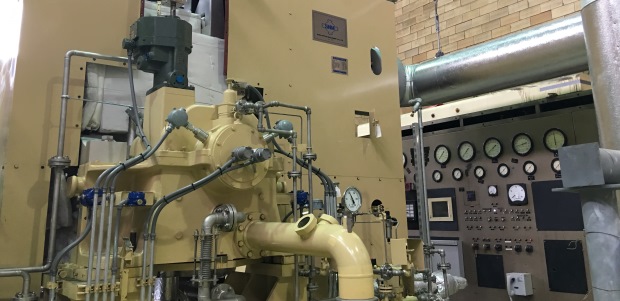Mark Chambers, former director of sustainability and energy for the District of Columbia, will lead New York City's sustainability programs, including efforts to cut its greenhouse gas emissions 80 percent reduction from 2005 levels by 2050 and achieve important air quality and renewable energy goals. He starts later this month.
With climate change, every sustainable aspect of development helps.
DOT has awarded $33.7 million to help airports reduce emissions and improve air quality and has proposed a new Los Angeles-Beijing flight for American Airlines.
With GE Technology, an Indiana Steel Mill is reusing water and eliminating 2,050 tons of waste each year.
The program seeks to develop vector-mediated modification technologies for mature plants to rapidly counter environmental and biological threats to crops. Threats of interest may include pathogens, pests, drought, and salinity.
The Washington State Department of Ecology petitioned for the designation to EPA Region 10, seeking a determination that adequate facilities for the safe and sanitary removal and treatment of sewage from all vessels are reasonably available for those waters, and so the state may completely prohibit the discharge from all vessels of any sewage into the sound.

The agency's labs "are a global technology powerhouse that harness innovation to create jobs, support new industries and help ensure America’s competitive edge in areas of national security and science," said Energy Secretary Ernest Moniz.
Increased operational visibility, savings and a greener stadium are the goal with Entic’s technology.
The program now includes the confidential collection of equipment failure data.
Together, three newly signed bills are expected to reduce greenhouse gas emissions by nearly 250,000 metric tons and spur retrofits in 16,000 buildings.

As thermal oxidizer technologies have been applied to a wider range of industrial applications, new challenges are continually uncovered that test their efficacy and durability.
This article originally appeared in the November 2016 issue of Environmental Protection.
Wintersville, Ohio has received $420,000 in funds from Ohio EPA to make improvements to wastewater systems that will lead to improved water quality.
Project harnesses cutting-edge technology to reduce costs in environmentally sustainable manner.

Building audits are conducted regularly, and these allow the academy to review or considers solar arrays; geothermal energy; building infrastructure; window efficiency; insulation; and installing new boilers and HVAC equipment.
Local water utility in Snowmass, Colo. looks to empower customers with water consumption data.
The companies acknowledged Coast Guard examiners took oil samples from the oil/water separator's overboard discharge valve and from the vessel's sludge tank and the samples from the two locations matched. Under U.S. and international law, sludge is never to be discharged through an oil/water separator, EPA reported.

Louisiana's Governor says “we are in a race against time.”
New study determines most efficient ways governments can increase renewable energy production.

"This project is a win for the environment and the communities of Cambridge and Boston. Ending the discharge of heated water to the Charles River will help protect fish, restore habitat, and reduce the severity of cyanobacteria blooms," said Charles River Watershed Association Executive Director Robert Zimmerman, Jr.
The USDA grant will fund Water Well Trust projects in seven central South Carolina counties, including Darlington, Lee, Marion, Sumter, Clarendon, Williamsburg, and Orangeburg, as well as three New York counties, including Delaware, Rensselaer and Columbia.